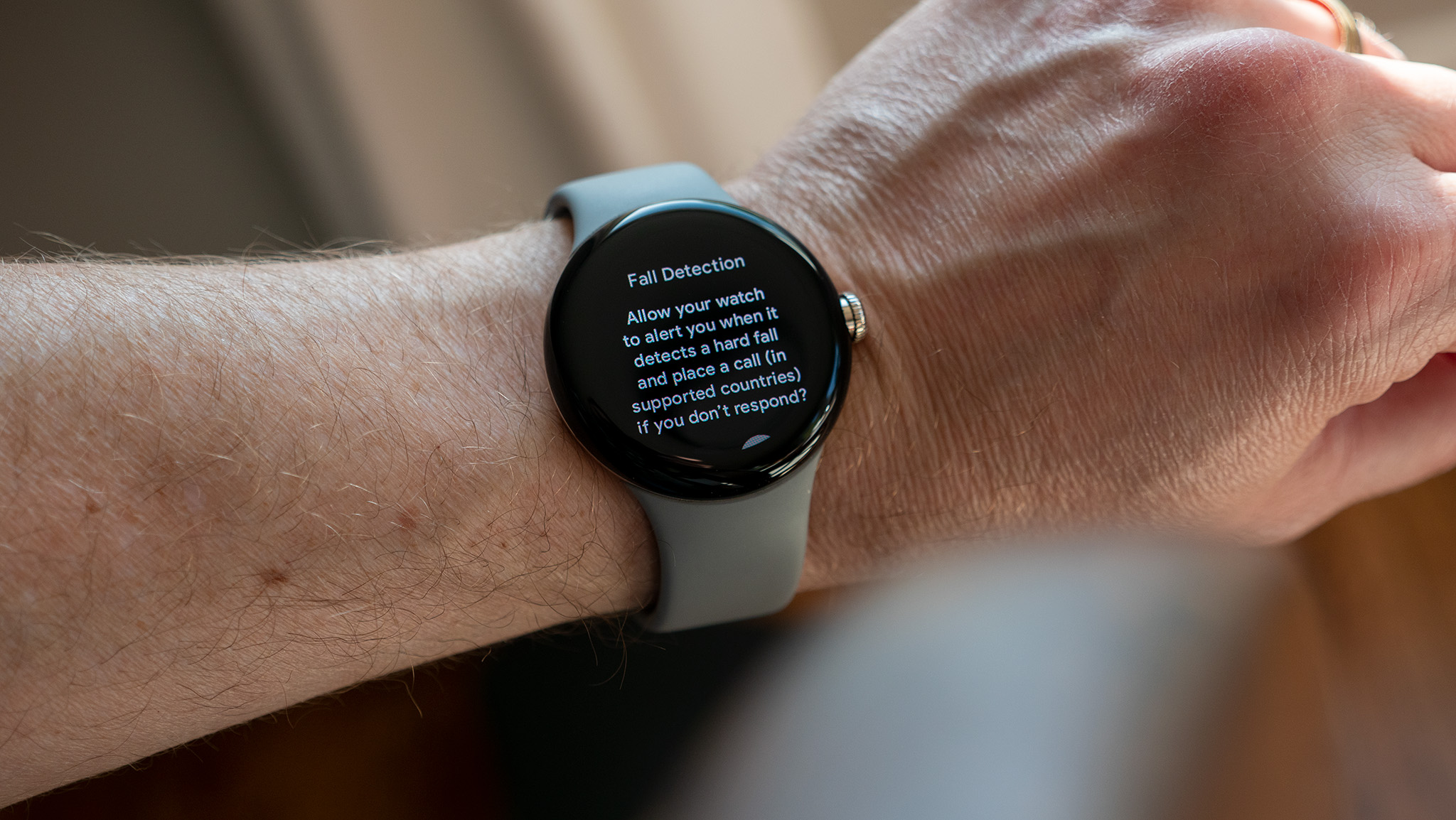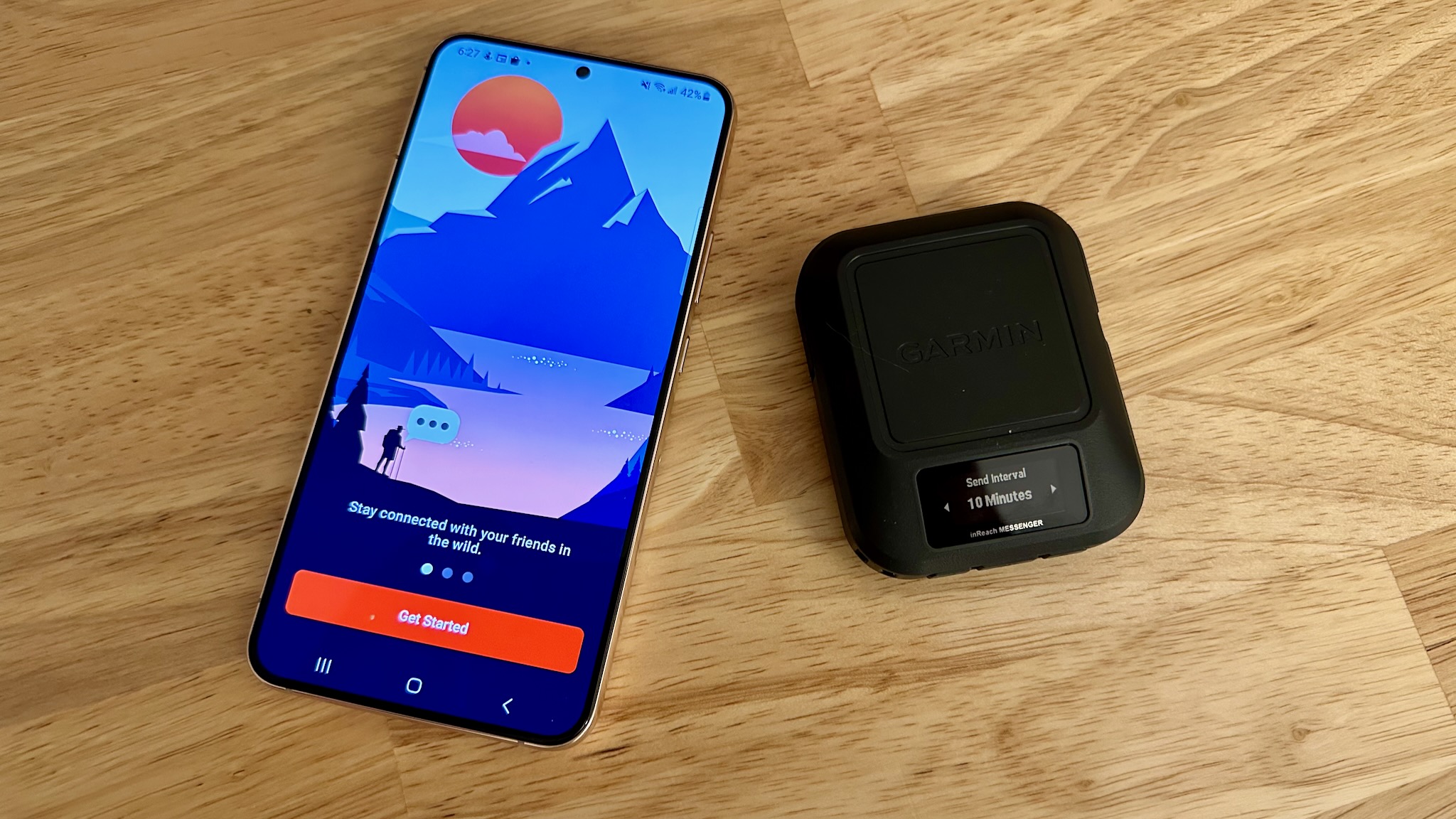Which smartwatches can you trust in an emergency?
Apple is famous for its Emergency SOS and crash/fall detection, but what other watch brands can you rely on during a crisis?

Whether or not you consider them tasteless or powerful, Apple's SOS commercials made a real impression last year, showing real-world examples of the Apple Watch Series 8 or iPhone 14 saving people's lives through their emergency SOS and satellite features.
What you may or may not know is that other smartwatches and fitness brands offer their own emergency features like Emergency SOS signals, fall detection, live broadcasting of your location, satellite messaging when you're out of cellular range, and so on.
So even if you're not an Apple user, you can keep yourself safe — if you make sure to enable these features ahead of your next outdoor adventure into the woods, mountains, or ocean.
Below, we're listing the most popular iOS and Android smartwatch brands in alphabetical order, describing all of the safety tools that each brand offers. This can help you decide which smartwatches you can count on during a crisis... and which you can't count on.
Apple Watch


In his new weekly column, Android Central Fitness Editor Michael Hicks talks about the world of wearables, apps, and overall fitness tech related to running and health.
The Apple Watch Series 8 and Apple Watch Ultra support Fall and Crash Detection. If any Apple Watch on watchOS 9 detects that you come to a sudden stop in either context and then remain immobile for 20 seconds (car crash) or 60 seconds (fall), it will sound an alarm and contact emergency services via your iPhone or built-in LTE connection.
Car crash detection is enabled by default, while fall detection is auto-enabled during workouts and outside of workouts for anyone aged 55 or older. Go to Settings > SOS > Fall Detection to make it always on, regardless of your age.
Outside of situations where the Apple Watch auto-detects a problem, you can hold down the side button or a "Hey Siri" command to call 911. Your watch will then display your stored medical information in case you're found unconscious; also, your emergency contacts will be contacted via text message after the 911 call ends. You can set up your Medical ID and list of emergency contacts in the Apple Health app on your phone.
Get the latest news from Android Central, your trusted companion in the world of Android
Lastly, if you buy the new iPhone 14 or iPhone 14 Pro, you get two years of free Emergency SOS via satellite in situations where you have no cellular coverage. This primarily works through your phone rather than the Apple Watch, but Apple does say that Crash/Fall Detection alerts are sent over satellite if there's no cellular connection.
Overall, the Apple Watch is a great option for safety features if (A) you also have a charged iPhone with you to relay a call or (B) you pay for the LTE version of the Apple Watch Series 8. The only real downside is that the standard Apple Watch battery is notoriously unreliable, and you don't want your watch dying on you right before an accident; the Apple Watch Ultra's 36-hour battery and built-in LTE are much more reliable for outdoor types.
Fitbit / Google Pixel Watch

Unfortunately for owners of the best Fitbit watches and trackers, Fitbit and Google have yet to add any emergency services or fall detection to these devices. The only exception is the Google Pixel Watch, which offers Fitbit Premium and has emergency SOS support via its Wear OS 3 support.
You can check our guide on how to enable emergency SOS calls on the Pixel Watch to get started. In Safety & Emergency settings, you can toggle Emergency SOS on, then add emergency contacts. Then, in an emergency, you simply tap the crown five or more times, and your Pixel Watch will call 911 and send automated text warnings to your contacts.
We also have a guide on how to enable Pixel Watch fall detection, but don't worry: it only takes about a minute to look through the "Personal Safety" menu on your watch. Once enabled, your watch will start loudly buzzing and ringing if you're immobile for 30 seconds after a detected fall. After 60 seconds, it'll contact 911 with an automated voice message.
In either case, the standard Pixel Watch will need a cellular or Wi-Fi connection via your phone to reach emergency services. If you own the Pixel Watch LTE, you can contact 911 directly via your wristwatch if your phone is broken or out of juice.
The Pixel Watch's 24-hour battery makes it slightly better than the Apple Watch in terms of longevity, but still not very reliable. Also, Google's recent phones, like the Pixel 7 Pro, have no satellite SOS support, though we've heard that Android 14 will add satellite connectivity support for future Android phones.
Perhaps the Pixel 8 will follow in Apple's satellite SOS footsteps. For now, the Pixel Watch works best in emergencies where there's a strong cellular signal.
Garmin watches

Garmin watches cater to hikers, climbers, winter sports fans, and other nature lovers who could easily find themselves in harm's way. So it makes sense that Garmin does an excellent job with its safety and emergency features, including tools that keep you safe outside of emergencies.
One of our top Garmin tips and tricks is to set up emergency contacts. In the Garmin Connect app, go to Safety & Tracking > Safety Features and enter your name and City/State. Add an emergency contact and send a request to that person; they'll need to accept the request in order to receive your emergency info. Then decide if you want your Garmin watch to call Emergency Services or a specific emergency contact when you trigger Assistance.
Once everything is set up, all you need to do to call for help is hold down the top-left button for seven seconds until the watch vibrates three times — or the top-right button on watches with fewer than five buttons, like the Venu 2. This will trigger emergency assistance.
Like most smartwatches, Garmin watches rely on a connected smartphone and cellular connection to work; in fact, iPhone owners have to make sure Garmin Connect is open in the background, and the watch is synced to it, or else emergency calls will fail. The connection is slightly more reliable for Android phone owners, thankfully.

The only exception is the Garmin Forerunner 945 LTE, which has built-in LTE support for limited uses like LiveTrack, Live Event Sharing, and Spectator messages. It doesn't support typical phone calls, however.
Using LiveTrack is actually a preventative safety feature. You can broadcast your location in real-time during a hike, so if something were to happen, your loved ones could see your exact GPS location where you stopped (or the signal stopped).
Garmin also sells GPS handheld devices like the GPSMap 67i or InReach Messenger that connect to an InReach satellite subscription and let you send SOS messages to Garmin's 24/7 International Emergency Response Coordination Center without needing a smartphone. But Garmin's watches can only serve as remote access to InReach devices — meaning you'll need both devices, plus a pre-paid subscription, to get SOS calls.
Depending on the level of your InReach subscription, you can have it send your satellite-backed location to your loved ones every 2 or 10 minutes. You can also send unlimited check-in messages and a set number of custom messages like, say, "A bear ate my leg. I'm by the big tree."
With or without InReach, Garmin watches are reliable in an emergency because of their consistently long battery life, ensuring they'll almost never die on you. It's just unfortunate that Garmin doesn't offer more watches with LTE support, leaving you dependent on your phone or making you spend hundreds on a second InReach-compatible device.
Samsung Galaxy Watch

For the latest three Galaxy Watch models running One UI 5 based on Wear OS 4, Samsung offers emergency SOS, emergency contacts, and hard fall detection. You can open your Galaxy Wearable app, sync your watch, and go to Watch Settings > Safety and Emergency to find these features and activate them.
You can press the top-right Home button five times on your Galaxy Watch 6 or Galaxy Watch 5 to trigger an emergency SOS call. You'll need to go into the Wearable app and trigger a countdown of 5–20 seconds so you have a chance to cancel the SOS if you make a mistake; otherwise, it happens immediately.
Also, in the Galaxy Wearable app, you can change the SOS from 911 to a personal number, choose whether or not to share your emergency with contacts, and make your medical information, like allergies and blood type, available to first responders on your phone and watch.
Compared to the Apple or Pixel Watch, the Galaxy Watch series is more reliable for battery life, lasting 40–50 hours for a standard model or 80 hours with the Galaxy Watch 5 Pro. Samsung also sells its watches with LTE support, meaning you can rely on them if your phone dies — but only if you buy a cellular model upfront.
Which watches have no emergency calling or fall detection?
As of mid-2023, these smartwatch or fitness tracker brands have no reliable emergency services or fall detection:
- Amazfit
- Fitbit
- Fossil
- Mobvoi TicWatch
- Withings
- Xiaomi Mi Band
Even though Google announced that it would bring emergency SOS calls to Wear OS 3 in May 2022, that only applies to Samsung and Google so far. Other stock Wear OS watches like the TicWatch 5 Pro and Fossil Gen 6 don't yet show the same options in their Safety settings.
It's also disappointing that Google hasn't brought fall detection and SOS calls to Fitbit, prioritizing Pixel Watch users' safety over Fitbit users' safety.
Otherwise, it's not too surprising that most of the best fitness trackers don't have these features. They're designed to be affordably cheap, with no mics or speakers for emergency calls. They could send an automated message to 911, but it's not clear if something like the Amazfit Band 7 would have the processing capacity to measure fall detection. We can only hope fitness brands make this more of a priority in the future.
Choosing the right smartwatch for emergency features
Apple, Garmin, Google, and Samsung all offer a pretty reliable option for emergency services. It just depends on what kind of emergency you're worried about.
If you don't spend too long in isolated corners of nature with no cell signal, then straightforward SOS calling and fall detection are probably all you need. You can buy a smartwatch with LTE functionality as an extra measure of protection in case your phone is dead, damaged, or unreachable, and all you have is the watch on your wrist. Since Garmin's last-gen LTE watch doesn't do traditional calling, you'll want an Apple, Google Pixel, or Samsung Galaxy Watch.
But if you live or frequently travel to places with poor reception, you may want satellite-backed emergency tools to go with your watch. Currently, your only two options on that front are Apple (for emergencies only) or Garmin (for satellite messaging, LiveTrack, and emergency calls).

Michael is Android Central's resident expert on wearables and fitness. Before joining Android Central, he freelanced for years at Techradar, Wareable, Windows Central, and Digital Trends. Channeling his love of running, he established himself as an expert on fitness watches, testing and reviewing models from Garmin, Fitbit, Samsung, Apple, COROS, Polar, Amazfit, Suunto, and more.
